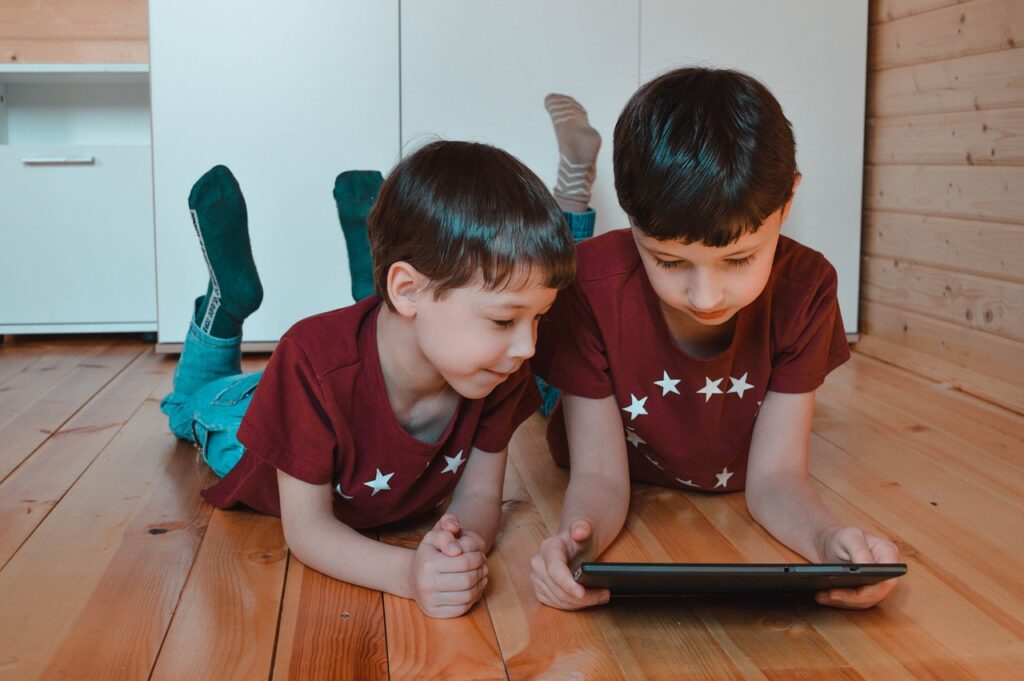Science
Helpful for all grades!
AAAS Science Netlinks – www.sciencenetlinks.com
SC Department of Natural Resources – www.dnr.state.sc.us
eNature – www.eNature.com
Franklin Institute – www.fi.edu
NASA’s space website for children – http://kids.msfc.nasa.gov
National Weather Service – www.nws.noaa.gov
National Wildlife Federation – www.nwf.org/kids/
Biology4Kids – www.biology4kids.com
Chem4Kids – www.chem4kids.com/
Physics for Kids – http://www.physics4kids.com/
Virtual Solar System – www.nationalgeographic.com/solarsystem
Kindergarten
Activities
Take a walk with your child and note the living and nonliving things in your surroundings. With your phone or a digital camera, you can also take pictures or even record your observations.
Cut pieces of fabric, cork, paper and other such items into similar shapes. With eyes closed, have your child try to identify the different materials based on touch.
Plant some radish or bean seeds in a cup or container and see what happens.
Visit a community garden and discuss the kinds of plants and other organisms that you see. – Collect leaves and sort them by size, shape, color, and texture. Have your child invent a way to measure the size using an object other than a ruler such as his hand. (Be aware of any poisonous plants.)
Go to the grocery store or a farmers’ market and describe the various kinds of fruits and vegetables.
Visit a zoo and ask your child to tell you what animals in the same section of the zoo have in common; also look for differences among the animals.
Track the weather for several days in a row and ask your child to try to predict the next day’s weather. Ask him/her to tell you why he/she predicted what would happen.
If you have some photos or pictures of people, have your child make predictions about what the weather was like from looking at the photos or pictures.
Discover what objects will stick to a kitchen magnet. Identify an object by the type of material from which it is made (wood, plastic, metal, cloth, or paper).
Books
Aliki. My Five Senses
Aliki. My Visit to the Zoo
Fowler, Allan. What Magnets Can Do
Gibbons, Gail. Seasons of Arnold’s Apple Tree
Hall, Zoe. The Surprise Garden
Hickman, Pamela. A Seed Grows
Kingfisher Publishing. Animal Babies on the Farm
DK Publishing. Growing Things (Play and Learn)
DK Publishing. See How They Grow: (Frog, Duck, Owl)
Pascoe, Elaine. Nature Close Up: Slime, Mold and Fungi (Board book)
First Grade
Activities
Try placing different materials or objects in front of a flashlight and observe what happens.
If you have some small mirrors available, hold them together in different ways to look at your image.
If you have an outside space, a sunny day, and some sidewalk chalk, go outside and have someone trace your shadow every half-hour or so. What do you observe about your shadow during the day? How does your shadow length relate to the position of the sun in the sky?
Keep a moon journal with your child. Go out and observe the moon, note the moon’s shape and position in the sky, and make drawings Can you name the phases of the moon?
Make a moon flipbook. (Search the web for directions.)
Talk with your child about what you and she or he sees outdoors; daylight and darkness, moon, and stars.
Visit a planetarium if one is nearby.
Look at maps and globes and find the locations of water.
Make a rock and mineral collection.
Plant several different seeds and watch them sprout and grow. Measure the weekly growth with a ruler or tape measure.
Look at different kinds of plants and ask your child to tell what she or he sees. Discuss the differences among them. Visit a garden center.
Care for a household plant, noting that plants need air, water, nutrients, space, and light.
Books
Carle, Eric. The Tiny Seed
Dussling, Jennifer. Looking at Rocks
Fowler, Allan. So That’s How the Moon Changes Shape!
Gibbons, Gail. Sun Up, Sun Down
Heller, Ruth. The Reason for a Flower
Murphy, Patricia J. Push and Pull
Stille, Darlene R. Push and Pull, Fast and Slow
Trumbauer, Lisa. All About Sound
Woodman, Nancy. Dirt: Jump Into Science
Swinburne, Stephen. Guess Whose Shadow?
Dorros, Arthur. Me and My Shadow
Hoban, Tana. Shadows and Reflections
Second Grade
Activities
Keep track of the daily temperature for a week by using an indoor/outdoor thermometer. Write the temperatures on a calendar.
On a map with weather symbols, identify what each symbol represents.
Examine weather maps from one week and discuss the changes noted.
Watch a program that describes safety precautions during severe weather.
Identify solids and liquids around your home.
Cook or bake something and discuss the changes in the ingredients you put together.
Make some ice cubes and talk about the differences in liquid water and the solid ice.
Use a magnet and check to see what kinds of materials are attracted.
View educational television programs that have information on animals.
Take a walk in your neighborhood, visit a park, or visit a zoo. Talk about the various animals that you see and how they look and what they need.
Visit a butterfly garden or find a spot where you can watch butterflies.
Webcams- Several web sites feature various birds, and you can watch development from egg to juvenile.
Books
Aardema, Verna. Bringing the Rain to Kapiti Plain
Cole, Joanna. The Magic School Bus Gets Baked in a Cake: A Book about Kitchen Chemistry
Fowler, Alan. It Could Still Be Water
Ganeri, Anita. From Caterpillar to Butterfly (How Living Things Grow)
Heiligman, Deborah. From Caterpillar to Butterfly
Mandel, Muriel. Simple Weather Experiments With Everyday Materials
Pfeffer, Wendy. From Tadpole to Frog
Rosinsky, Natalie M. Magnets: Pulling Together, Pushing Apart
Schreiber, Anne. Magnets
Third Grade
Activities
Discuss some of the uses for magnets.
Review a world map to see where the most active volcanoes and earthquake zones are.
Start a rock and mineral collection. Learn how to classify rocks and minerals.
Discuss examples of fossils and locations where they are found.
Discuss the kinds of plants and animals found in South Carolina. What kinds of habitats are available in your state? You can also write and draw this information on a map.
View educational television programs that have information on plants and animals.
Take a walk in your neighborhood, visit a park, or visit a zoo. Talk about the various plants and animals that you see and how they look and what they need.
Books
Aliki. Fossils Tell of Long Ago
Cole, Joanna. The Magic School Bus and the Electrical Field Trip
Crossingham, John. What Is Hibernation?
Hewitt, Sally. All Kinds of Habitats
Hewitt, Sally. Heat
Loewer, Peter and Jean. The Moonflower
Pellant, Chris. Smithsonian Handbooks: Rocks & Minerals
Silver, Donald. One Small Square: Woods
Wilkes, Angela. Animal Homes (Kingfisher Young Knowledge)
Whalley, Margaret. Magnetism & Electricity
Fourth Grade
Activities
Keep a daily log of the weather. Describe the clouds. Make drawings. Compare the weather to last year’s weather.
Find folk tales or stories that provided explanations for the weather.
Make a cloud in a bottle (search the web for directions).
Observe the night sky. See if you can locate easily recognized constellations.
If you have access, download a free astronomy app.
Keep a moon journal.
Visit a planetarium if you can. Some universities have open nights when you can view the night sky with their telescopes.
Use a flashlight to determine what materials are transparent, translucent, or opaque.
Listen to different musical instruments and notice differences in pitch and volume.
Take a walk in your neighborhood, visit a park, or visit a zoo. Talk about the various plants and animals that you see and how they look and what they need.
Visit a garden shop and discuss differences that you see in plants.
Set up a terrarium or an aquarium.
Visit a nature center, a pond, a lake, the shore, etc. Talk about the similarities and differences you see in plants and animals.
Books
Arnosky, Jim. Crinkleroot’s Guide to Walking in Wild Places
Asimov, Isaac. Why Does the Moon Change Shape?
Cole, Joanna. The Magic School Bus Inside a Hurricane
Cole, Joanna. The Magic School Bus In The Haunted Museum: A Book About Sound
Gold, Becky. Chasing Tornadoes
Nankivell-Aston, Sally and Dorothy Jackson. Science Experiments with Light
Stille, Darlene R. Tropical Rain Forests
Taylor, Barbara. Look Closer: Desert Life
Fifth Grade
Take an inventory of the solids, liquids, and mixtures in your kitchen and other areas on your home
Go to your local library or search online for maps that show landforms and oceans around the world.
If you bike, rollerblade, or ride a skateboard analyze your motion (making sure to wear a helmet!). Note how you move to change direction.
Visit a nature center, a pond, a lake, the shore, etc. Talk about the similarities and differences you see in plants and animals and where each lives.
Read about endangered species and the reasons they are endangered.
Books
Boudreau, Gloria. Ecosystems Life in a Forest
Clifford, Nick. Incredible Earth
Cobb, Vicki. Science Experiments You Can Eat
Gardner, Robert. Science in Your Backyard
Gilbreath, Alice T. The Continental Shelf: An Underwater Frontier
Nankivell-Aston, Sally and Dorothy Jackson. Science Experiments with Forces
Southgate, Merrie. Agnes Pfl umm and the Stonecreek Science Fair
Southgate, Merrie. No Place Like Periwinkle
Sixth Grade
Activities
Check the weather forecast and various weather maps online. The Weather Channel also broadcasts programs.
Follow the weather forecast for a week or so. How on target were the predictions?
Go on a hike to a local pond, park, nature center, or wetlands. Photograph the animals and plants and discuss how they rely on water.
Look for human impacts on the environment. What are the pros and cons of things you see?
Make a list of all the ways in which you use energy.
Read about and discuss the Earth’s magnetic field.
Discuss animal and plant adaptations.
Books
Beller, Joel and Carl Raab. Hands-on Science Series: Plants
Bundey, Nikki. Storms and the Earth: The Science of Weather Series
Elsom, Derek. Weather Explained: A Beginners Guide to the Elements
Galiano, Dean. Clouds, Rain and Snow
Haber, Louis. Black Pioneers of Science and Invention
Hickman, P. Starting with Nature: Plant Book
Hickman, Pamela. Animals and Their Mates: How Animals Attract, Fight for, and Protect Each Other
McKinney, Barbara. A Drop Around the World
Nankivell-Aston, Sally and Dorothy Jackson. Science Experiments with Simple Machines
Snedden, Robert. Plants and Fungi: Multicelled Life (Cells and Life)
Van Cleave, Janice. Physics for Every Kid
Seventh Grade
Activities
Examine labels to see what kinds of materials are in various products in your home.
Find an online interactive periodic table to learn more about the elements.
Most garden centers have soil test kits that you can use to determine the pH of your soil.
Go on a hike to a local pond, park, nature center, or wetlands. Photograph the animals and plants and discuss how they live and where they get their energy.
On a map of South Carolina, identify the various ecosystems present.
Discuss animal and plant adaptations.
Books
Bial, Raymond. A Handful of Dirt
Carson, Rachel. Silent Spring – 40th Anniversary Edition
The Earthworks Group. 50 Simple Things Kids Can Do To Save the Earth
Friedlander, Mark P, Jr. Outbreak: Disease Detectives at Work
Morgan, Sally. Life Science In Depth: Cells and Cell Function
Nardi, James. World Beneath Our Feet: A Guide to Life in the Soil
Winner, Cherie. Erosion
Walker, Richard. Genes and DNA
Eighth Grade
Visit a park and try the playground equipment to investigate force and motion.
If you bike, rollerblade or skateboard, analyze what you need to do to change direction and motion. Don’t forget to wear a helmet!
Go online and investigate extinct species. What were some causes of extinctions?
On a map of South Carolina identify areas where you can find fossils. What do the fossils tell you about life in the past?
Books
Carruthers, M. W. The Moon
Downs, Sandra. Earth’s Fiery Fury
Fullick, A. Under Pressure: Forces
Grace, K. Forces of Nature: The Awesome Power of Volcanoes, Earthquakes, and Tornadoes
Heinlein, Robert. Have Spacesuit Will Travel
Kittinger, Jo. Stories in Stone: The World of Animal Fossils
Lafferty, P. Eyewitness: Force and Motion
Maslin, Mark. Restless Planet Series: Earthquakes
Ride, S. and T. O’Shaughnessy. Exploring Our Solar System
Sauvain, P. Motion (The Way It Works)
Spangenburg, R. and K. Moser. A Look at the Sun
Stille, D. Waves: Energy on the Move
Sussman, Art. Dr. Art’s Guide to Planet Earth
High School
American Chemical Society http://www.acs.org/content/acs/en.html
American Physics Society http://www.aps.org
Paleozoology http://www.paleozoic.org/home.htm
Biology Simulations https://phet.colorado.edu/en/simulations/category/biology
Chemistry Simulations https://phet.colorado.edu/en/simulations/category/chemistry
Encyclopedia of Life http://eol.org
Exploratorium http://www.exploratorium.edu
Genetics Learning Center http://learn.genetics.utah.edu
Howard Hughes Medical Institute http://www.hhmi.org
Journey North https://www.learneg/jnorth/
NASA Science http://science.nasa.gov
Tree of Life Web Project http://tolweb.org/tree/phylogeny.html
Physics Simulations http://phet.colorado.edu/en/simulations/category/physics










